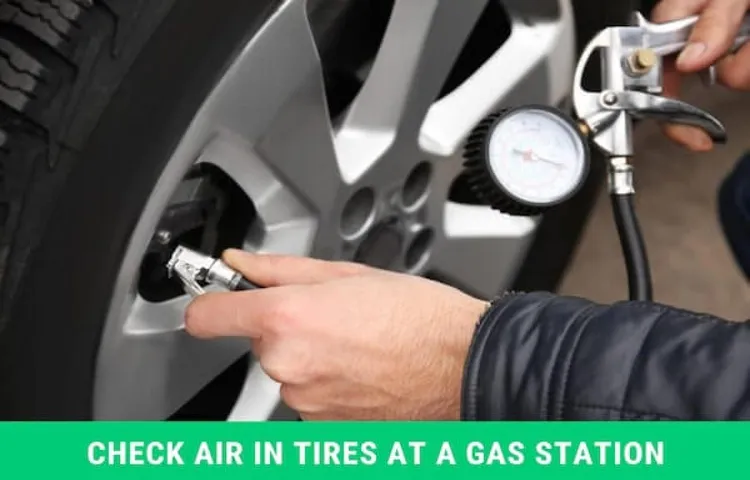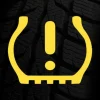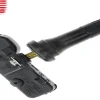Do you know how to air up your tire at a gas station? It may seem like a simple task, but many people are unsure of where to start. Luckily, it’s a skill that is easy to learn. First of all, make sure that you have your tire pressure gauge and any necessary coins or bills for the air machine.
Once you’ve parked close to the air pump, remove the valve cap from your tire and keep it somewhere safe. Next, attach the tire pressure gauge to the valve stem and push down firmly. The gauge should give you a reading of your tire pressure, which you can compare to your vehicle’s recommended tire pressure listed in your owner’s manual or on the inside of your driver’s side door.
If your tire pressure is too low, it’s time to use the air pump. Simply insert the coins or bills into the machine (if necessary) and then attach the hose to your tire valve stem. Use the gauge on the pump to fill your tire with air until it reaches the recommended pressure.
As you inflate your tire, be sure to periodically check the pressure with your gauge to avoid over-inflation. Once your tire is at the proper pressure, remove the hose from the valve stem and replace the valve cap. Congratulations, you’ve successfully aired up your tire at a gas station!
Table of Contents
Check Tire Pressure
If you’re wondering how to air up a tire at a gas station, don’t worry, it’s a simple process that can be done quickly and easily. First, locate the air pump at the gas station and park your car close enough for the air hose to reach the tire. Then, remove the valve cap from the tire and attach the air hose to the valve stem.
Make sure the hose is tightly secured to prevent any air from escaping. Next, turn on the air pump and use the gauge to check the current tire pressure. If it’s low, add air in short bursts and periodically check the pressure until it reaches the recommended level, which can typically be found on the tire’s sidewall.
If the pressure goes above the recommended level, simply release some air until it reaches the appropriate level. Finally, remove the air hose and replace the valve cap. Voila! You’ve successfully aired up your tire and are back on the road with safer driving conditions.
Use a Tire Gauge
Checking your tire pressure regularly is important for maintaining the longevity of your tires and ensuring your safety on the road. One of the essential tools for this task is a tire gauge. A tire gauge can measure the air pressure in your tires accurately, allowing you to make any necessary adjustments.
Using a tire gauge is simple and easy. First, unscrew the valve cap on the tire to be tested. Then press the tire gauge onto the valve stem and press down firmly until no hissing sound is heard.
The gauge will give you a reading that you can compare with the recommended pressure for your vehicle, which can be found in your manual or on a placard located on the driver’s side door jamb. If the pressure is too low, use an air compressor to inflate the tire until the recommended pressure is reached. Remember, having the correct tire pressure can save you money on fuel, improve handling, and increase the lifespan of your tires.
So, check your tire pressure regularly with a tire gauge to ensure a safe and comfortable ride every time.

Refer to Car Manual
When it comes to checking your car’s tire pressure, one of the most important things to remember is to refer to your car manual. The manual provides you with all the information you need to know about your tires, including the recommended pressure levels for each tire. It’s essential to understand that different cars have different pressure requirements, and by consulting your manual, you can ensure that you’re inflating your tires to the correct level.
Incorrect tire pressure can lead to poor fuel economy, premature wear and tear on your tires, and a less-than-smooth driving experience. So, if you’re unsure about the recommended pressure for your tires, take the time to review your car manual before inflating them. It might seem like a small detail, but it can make a big difference in the long run.
So, take care of your car’s tires, and your car will take care of you!
Locate Air Pump
Are you wondering how to air up a tire at a gas station? The first step is to locate the air pump, which is usually located near the gas station. Look for a sign that says “air” or “tire inflator.” Once you find the air pump, park your car close enough so that the air hose can reach all of your tires.
Next, remove the valve stem caps from each tire and keep them somewhere safe. Then, check the recommended tire pressure for your vehicle, which can usually be found in your owner’s manual or on a sticker inside the driver’s side door. After you know the recommended pressure, attach the air hose to the valve stem and start inflating the tire, keeping an eye on the pressure gauge and stopping when it reaches the recommended pressure.
Once all your tires are properly inflated, don’t forget to replace the valve stem caps and you’re ready to hit the road again. Remember to check your tire pressure regularly, as under-inflated tires can lead to decreased gas mileage and can be a safety hazard.
Look for Air Pump Icon
When you’re driving on the road and notice that one of your tires is looking a little flat, it can be a stressful situation. Fortunately, most gas stations have air pumps that you can use to inflate your tire and get back on the road. So if you’re not sure where to find the air pump at a particular gas station, keep an eye out for the air pump icon.
This icon will usually be prominently displayed near the gas station’s sign or entrance, and it’s a quick and easy way to locate the air pump. Once you find the icon, simply follow the arrows or signs that point you in the direction of the pump. Remember, it’s important to keep your tires properly inflated to ensure that your car runs smoothly and can handle any bumps or obstacles on the road.
So make sure you know where to find the air pump at your local gas station and check your tires regularly to keep your car in top shape.
Ask Attendant for Assistance
“air pump” Have you ever found yourself stranded with a flat tire and no way to inflate it? Luckily, gas stations and other public areas often have air pumps available for use. But what if you can’t locate it? Don’t worry, just ask the attendant for assistance. They’ll be happy to direct you to the air pump and may even offer to help you use it.
Air pumps are essential for maintaining proper tire pressure, which can improve your vehicle’s fuel efficiency and overall handling. So, next time you need to inflate your tires, remember to ask for help if you can’t find the air pump. It’s always better to be safe than sorry, and the attendant will be more than happy to assist you.
Check if Air Pump is Working
If you’re wondering whether your air pump is working correctly, the first thing you need to do is locate it. The air pump is usually found near the engine and is often identified by a belt. Once you’ve located the air pump, you can begin to troubleshoot the problem.
One way to determine if the air pump is working is to listen for any unusual noises, such as a squeaking or grinding sound. If you hear an unusual noise, it could be an indication that the air pump needs to be repaired or replaced. Another way to check if your air pump is working is by checking the pressure in your tires.
A faulty air pump can often result in uneven or low tire pressure. By regularly checking your air pump, you can ensure that your car is running smoothly and your tires are properly inflated. Proper maintenance of your air pump is essential for the longevity of your car and the safety of your passengers.
Air up Your Tire
Learning how to air up a tire at a gas station is an essential skill for any driver. First, you need to locate the air pump at the gas station. It is usually located near the entrance or next to the gas pump.
Then, remove the valve cap from your tire and attach the air hose to the valve stem. To get an accurate reading, check your tire pressure before adding extra air. To add air, press the lever on the air pump and hold it until you reach the desired pressure level.
Keep checking the pressure periodically while filling the tire. Once you’re done, double-check the pressure again and adjust it as needed. Finally, don’t forget to replace the valve cap and put away the air hose.
Remember to repeat the process for each tire that needs air. With these easy steps, you can quickly and easily air up your tire at any gas station, ensuring a safe and efficient drive.
Remove Valve Stem Cap
Air up your tire by removing the valve stem cap. This may seem like a small step, but it can make a big difference in how efficiently your tire holds air. The valve stem cap is the small cap that covers the tire valve stem.
Removing it allows you to attach an air compressor or a tire gauge to the valve stem, so you can get an accurate reading of the tire pressure and add or release air as needed. However, make sure to keep track of the cap, as losing it can allow dirt and debris to clog the valve stem, causing air leaks. By simply keeping an eye on your tire pressure and removing the valve stem cap when needed, you can ensure safer and smoother travels.
So, next time you need to air up, remember to start by taking off that little, but important, valve stem cap.
Press Nozzle onto Valve Stem
Air up your tire by pressing the nozzle onto the valve stem. This is a simple task that you can do yourself without any assistance. First, locate the valve stem on your tire.
It is usually located on the outer edge of the wheel and looks like a small protrusion. Next, remove the cap that covers the valve stem and keep it safe. Take the air hose and press the nozzle firmly onto the valve stem.
You will hear a hissing sound when the valve is open. Once you have the nozzle securely in place, you can turn on the air compressor. Watch the pressure gauge as the tire inflates and release the trigger when you reach the desired pressure.
It’s important not to overinflate the tire, as this can cause it to blow out. Be sure to replace the valve stem cap when you’re finished. By properly inflating your tires, you can improve gas mileage and extend the life of your tires.
Press Button for Air
With the fast-paced lifestyle, it’s easy to forget to check your car’s tire pressure regularly. That’s why some gas stations offer a quick and easy solution to this problem – a “press button for air” service. Just pull up to the designated spot, press the button, and voila! Your tire is now filled up to the recommended pressure.
But why is it important to keep your tires properly inflated? Well, first of all, it improves your car’s fuel efficiency. When your tires are underinflated, it creates more resistance between the tires and the road, making it harder for the engine to move the car. This can lead to lower miles per gallon and cost you more money in the long run.
Additionally, driving on underinflated tires can be dangerous. It can cause your tires to overheat, which can lead to blowouts while driving. It can also affect your car’s handling and make it more difficult to control, especially in wet or slippery conditions.
So, next time you see the “press button for air” service at the gas station, take advantage of it. It only takes a few minutes, and it can save you money on gas and prevent potential accidents. Remember, properly inflated tires are essential for safe and efficient driving.
Check Tire Pressure Frequently
One of the most important and overlooked aspects of vehicle maintenance is checking your tire pressure regularly. Having the correct amount of air in your tires not only keeps you safe on the road but also improves your fuel efficiency. So, air up your tires whenever necessary! If your tires are too low on air, they can cause your vehicle to handle poorly, and in extreme cases, can even lead to a blowout.
On the other hand, overinflated tires can also have adverse effects such as uneven tire wear and reduced contact with the road, which can cause handling issues. Therefore it’s crucial to check your tire pressure frequently, at least once a month, and before any long trips. You can use a tire pressure gauge to check for the correct level of inflation.
Keep in mind that the recommended tire pressure can vary depending on the make and model of your vehicle, so always refer to your car’s manual or consult a professional mechanic. By taking the time to regularly check and adjust your tire pressure, you can help ensure your safety and save money on fuel costs.
Final Steps
Air pressure is essential for your car’s safety and performance, and knowing how to air up your tire at a gas station is crucial. Firstly, locate the air pump and insert the nozzle onto your tire’s valve stem. Press the gauge to check the current air pressure level and compare it against your car’s recommended PSI level (found in the manual or the door jamb).
Add or release air to reach the appropriate level, rechecking the pressure as necessary. Don’t forget to replace the valve cap and repeat the steps on all four tires. Overinflating or underinflating your tires can lead to poor gas mileage, uneven wear, and, in extreme cases, a tire blowout.
With this simple process, you can ensure your tire’s safety and performance, keeping your car running seamlessly down the road.
Replace Valve Stem Cap
Now that you have properly inflated your tires, the final step to ensure they stay in optimal condition is to replace the valve stem cap. This may seem like a small detail, but it can make a big difference in preventing air leakage. The valve stem cap acts as a sealant to keep out dirt, debris, and moisture that can cause corrosion and blockages.
It also prevents air from escaping, helping to maintain proper tire pressure. When choosing a valve stem cap, make sure it is compatible with your tire valve stem and is snugly secured. Remember that even a minor leak can cause your tire pressure to drop, affecting your vehicle’s handling and fuel efficiency.
So don’t overlook this simple yet important step in tire maintenance.
Check Tire Pressure Again
After checking your tire pressure, you might think you’re done, but it’s always important to double-check. Before hitting the road, make sure to take one final look at your tires to ensure they are fully inflated to the recommended pressure. If the pressure isn’t correct, you could end up with a bumpy ride, worse gas mileage, and even tire damage.
Don’t forget to check the pressure on your spare tire as well, as it’s easy to overlook. This final step only takes a few extra minutes and could make all the difference in ensuring a safe and smooth drive. So, take the time to check your tire pressure again before heading out on your next adventure.
Repeat for Other Tires
Now that you’ve successfully changed the tire and tightened all the bolts, it’s time to repeat the process for the other tires. Don’t assume that just because you’ve done it once that the rest will be a breeze! Remember to check the tire pressure and tread depth on all the tires before beginning. Make sure you’re working on a flat surface and that the car is in park with the emergency brake engaged.
Loosen the bolts on the next tire and repeat the steps you took for the first tire, making sure to carefully align the wheel before tightening the bolts back up. Don’t rush the process, take your time and make sure each tire is properly secured before moving onto the next. Before you know it, all four tires will be changed and ready to hit the road again!
Conclusion
In conclusion, pumping up a tire at a gas station may seem like a simple task, but it requires the perfect combination of physics and common sense. Remember to check your tire’s recommended pressure, keep the valve stem clean and free of debris, and enjoy the satisfying rush of air flowing into your tires. And if all else fails, just remember this timeless piece of advice: when inflating your tires, never underestimate the power of a good dad joke to keep your spirits high.
Happy pumping!”
FAQs
What equipment do I need to air up a tire at a gas station?
You will need a tire pressure gauge and access to an air compressor at the gas station.
How do I know how much air pressure my tire needs?
The recommended PSI (pounds per square inch) can be found on the tire itself or in your vehicle’s owner manual.
Do I need to pay to use the air compressor at the gas station?
It depends on the gas station, some may offer free air while others may charge a small fee.
Can I overinflate my tire if I am not careful when airing it up?
Yes, overinflating a tire can cause damage and be dangerous. Be sure to check the recommended PSI and use a tire pressure gauge.
Is it safe to drive on an underinflated tire to the gas station?
It is not recommended to drive on an underinflated tire as it can cause damage and increase the risk of a tire blowout.
Can I use the same air compressor to put air in all four tires?
Yes, you can use the same air compressor to fill all four tires but be sure to check the pressure of each tire and fill them to the recommended PSI.
Can I release air from an overinflated tire at the gas station?
Yes, most air compressors at gas stations have a valve to release air if needed. But be cautious not to release too much air and make the tire underinflated.



